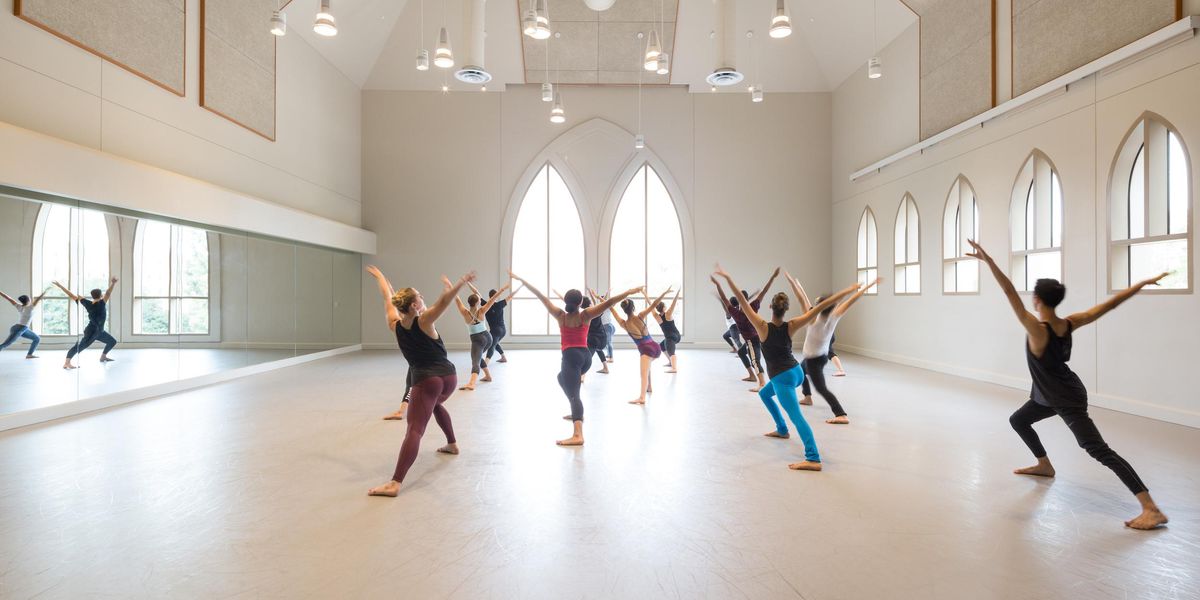Learning From the Past
Students can take their dancing to the next level with an appreciation of its history.
Students from The Ailey School perform an excerpt from Revelations. PC Naya Samuel, Courtesy Ailey.
Before writing off your dance history requirement, college dancers should consider the unexpected benefits they could reap from paying close attention. Mary Margaret Holt, dean of fine arts and director of dance at the University of Oklahoma, has observed that studying dance history gives students a major advantage. “We find that the students minoring in dance history view dance through a different experiential base,” she says. Today, undergraduate programs are incorporating dance’s past in innovative ways, integrating it into the studio more than ever before. This hands-on approach allows dancers to put their work in context, using retrospective awareness to deepen their understanding of their art.
History in Motion
One way students can explore dance’s past is by learning historical repertory.
Ailey/Fordham BFA students take Black Traditions in American Dance and World Dance History, which are often coordinated with repertory classes. “The movement shows you a different side of what you’re learning in the classroom,” says Marie Paspe, a recent graduate of the program, who learned Blues Suite and Revelations from Ailey II artistic director emerita Sylvia Waters. “When you study dance history, you receive knowledge from past generations that you wouldn’t normally consider in the studio. This changed the way I move and think of dance.”
Lucas Hoving at Bennington in 1985. PC Bruce Hoheb, Courtesy DM Archives.
Evolving Traditions
Once the creative sanctuary of dancers like Graham, Cunningham and Limón, Bennington College is hallowed ground in the modern dance community. “Dance history is taught in essentially every dance class at Bennington,” says Geoffrey Ballinger, a senior in the dance program. “We have access to lots of footage from the Bennington School of the Dance days, like videos showing Martha Graham dancing out on the lawn.” The founding mission of the Bennington School of the Dance was to promote individual expression through new works and collaborations; Ballinger asserts that this tradition of innovation still lives on. “This collaborative energy has existed for a long time,” he says. “The opportunity to choreograph on and receive feedback from my peers has shown me a side to dance that I’d never see otherwise.”
Experts on Campus
Notable dance scholars on faculties across the country.
Janice Ross, Stanford University
A longtime contributor to Dance Magazine, Ross recently published Like a Bomb Going Off, a book that examines the influence of Russian choreographer Leonid Yakobson’s work as a means of resistance in the Soviet Union.
Mark Franko, Temple University
After his success as a dancer and choreographer, Franko has published a number of books that explore dance history across disciplines and eras, from renaissance revival to the birth of modern dance in the 1930s.
Ann Cooper Albright, Oberlin College
Albright, who chairs Oberlin’s dance department, discusses her uniquely physical approach to instructing and studying dance in her prizewinning book, Engaging Bodies.
Thomas F. DeFrantz, Duke University
DeFrantz merges his studies in dance and cultural
history as both the chair of African and African-American studies and a professor of dance, writing extensively on the works of Alvin Ailey and other topics in African-American dance.
Lynn Garafola, Barnard College
A dance scholar, critic and author of Legacies of Twentieth-Century Dance, Garafola’s courses tackle topics such as romanticism and modern dance in the wider scope of race, gender and politics. She is a 2016 Dance Magazine Award recipient.
Considering a Minor?
Here’s a peek at what
University of Oklahoma’s dance history minors have on their plate.
- 3 courses of upper division dance history: Early Roots, Three Centuries of Development and History of World Dance
- At least 2 courses in ballet and/or modern dance technique
- 2 required courses: Understanding Dance and Introduction to Non-Western Dance Forms
- Electives like Introduction to Flamenco are offered




